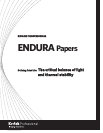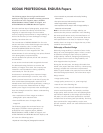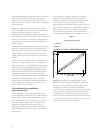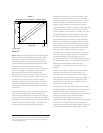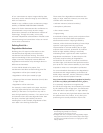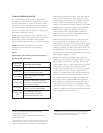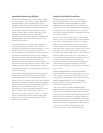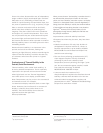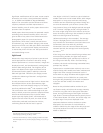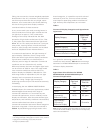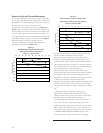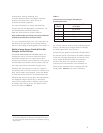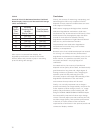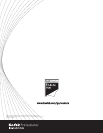
The following pages discuss light and thermal
stability as they apply to Kodak’s newest generation
of professional color negative papers, KODAK
PROFESSIONAL SUPRA, SUPRA VC Digital, and
U
LTRA ENDURA and ENDURA Metallic papers.
Since the earliest days of photography, people have
wanted to increase the stability and extend the
l
ongevity of captured images. As the medium
evolved, ongoing improvements in image stability, as
well as the discovery of new challenges to image
stability, have been the rule.
The introduction of KODACHROME Film for color
movies and slides in the 1930s brought new stability
challenges related to color. In 1942, Kodak
announced KODACOLOR Film for prints,
the world’s first true color negative film. The
advancements of color technology into prints allowed
color photography to expand rapidly
into the professional portrait/social and consumer
environments.
It was at this time that Kodak recognized the need
for dedicated testing facilities to examine the
stability of images. Since then, the company has
invested in and expanded its testing capability
continuously for over 50 years.
As advances in technology have improved image
stability and reduced major concerns, new, more
subtle c
oncerns have arisen. In the last 15 years, the
silver halide-based photographic materials of all
manufactur
er
s have improved significantly, creating a
need for more precise measurements of image
stabilit
y o
v
er long
er time periods. New technologies
have also brought a need for a better understanding
of these factors:
•
the c
omplexities of how images on modern
photographic print materials fade
• how the different uses of images affect
imag
e lif
e
The following pages discuss these factors as
they apply to Kodak’s newest generation of
prof
es
sional color negative papers, KODAK
PROFESSIONAL SUPRA, SUPRA VC Digital, and
ULTRA ENDURA and ENDURA Metallic Papers, and
will cover the f
ollo
wing t
opics:
• objectives in the design of photographic materials
• h
ow materials are processed and used by finishing
laboratories
• how prints are used and stored by the end-user
• what image stability means today
• the importance of the ways in which image stability is
m
easured and interpreted
Note: In this discussion of image stability, we
a
ssume that the process conditions in the finishing
lab meet specifications set by the manufacturer of
the photographic material. A process that does not
meet specifications can have an impact on image
stability that is as large as or larger than any of the
variables discussed here.
Philosophy of Product Design
Obviously image stability is a decisive factor in the
design of color photographic paper. In fact, it would
be possible to design a paper solely to optimize
image stability. However, designing and optimizing
for a single criterion such as image stability will
often degrade other key factors.
During the last 20 years, the design of Kodak silver
halide color papers has been driven by a three-prong
strategy, coupled with continuous improvement.
While a typical Kodak color paper has more than 60
individual design parameters, we follow three major
design criteria:
• image quality today
• image quality tomorrow (i.e., print longevity)
• ease of use in the finishing lab
In many instances, trade-offs between the major
crit
eria would be possible. For example, excellent
image quality with accurate color and pleasing flesh
r
eproduction depends on the image dyes formed by
the paper, so color and flesh reproduction could be
c
ompr
omised t
o achie
ve good dye stability. Similarly,
dyes optimized for image stability can be more
process-sensitive, which can cause difficulties for the
finishing lab.
KODAK PROFESSIONAL ENDURA Papers
1



